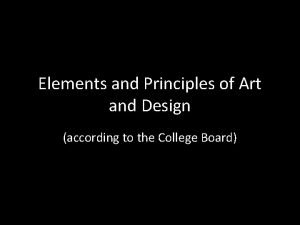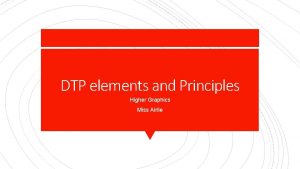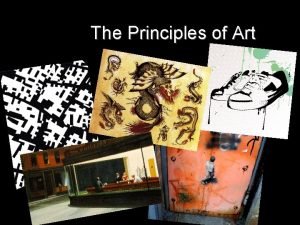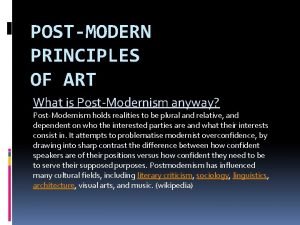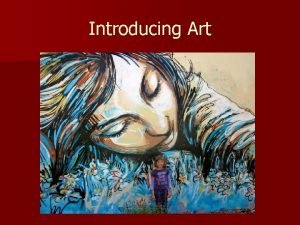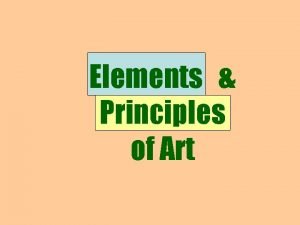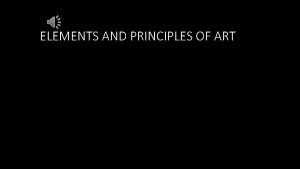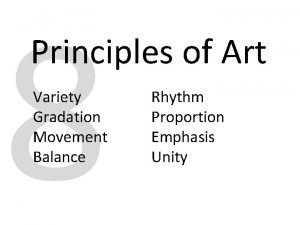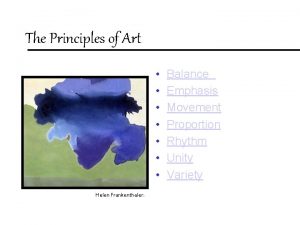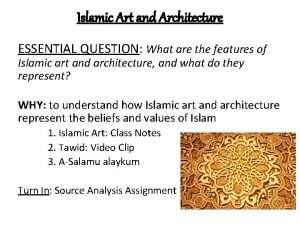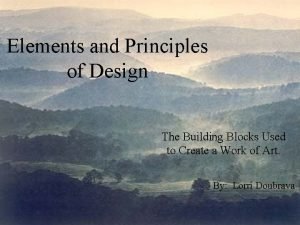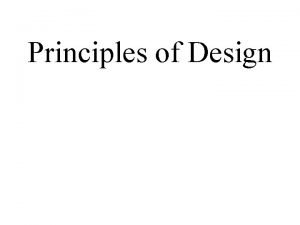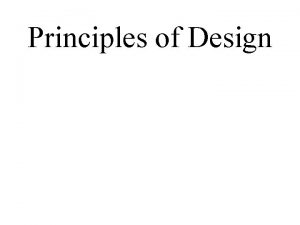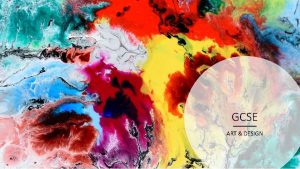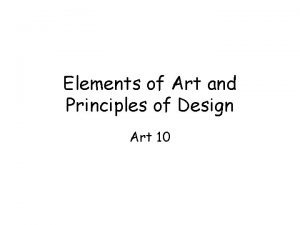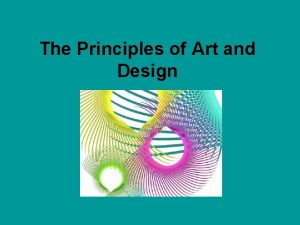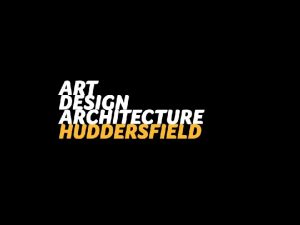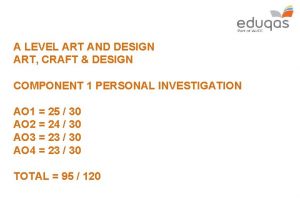ART PRINCIPLES OF DESIGN PRINCIPLES OF ART n















- Slides: 15

ART PRINCIPLES OF DESIGN

PRINCIPLES OF ART n n Principles are guidelines used to help artists organize the art elements to create works of art Principles include: n n n n n Balance Variety Harmony Emphasis Proportion Movement Rhythm Unity Transition

BALANCE n n A principle of art concerned with arranging art elements so no one part of a work overpowers or seems heavier than any other part There are three kinds of balance in artwork n n n Formal balance- also known as symmetrical balance where the two halves are mirror images Informal balance- known as asymmetrical balance where two unlike elements seem to carry equal weight Radial balance- occurs when elements or objects are positioned around a central point and radiates from the center

BALANCE-continued n n Visual Weight- creates a visual sense of equal weight by using size, brightness, hues, textures, shapes, light and dark hues. Psychological Weight- refers to the importance of the person or objects within the artwork

VARIETY n n n Concerned with combining one or more elements to create interest by adding slight changes Heightens the visual appeal of the work Too little variety and work is boring, too much creates chaos

VARIETY-Continued n Types of variety include: n Shapes n value n sizes

HARMONY n A principle concerned with blending elements to create a more calm, restful appearance

EMPHASIS n n n Makes an element of an artwork stand out Attracts viewer’s attention to an important part Can be created by contrast or extreme changes in an element

PROPORTION n n Principle concerned with the relationship of one part to another and to the whole Can be size, color, etc.

MOVEMENT n Used to create the look and feeling of action and to guide a viewer’s eye throughout the work of art

RHYTHM n n Principle concerned with repeating an element to make a work seem active or to suggest vibration Can create rhythm by repeating elements but also the same object over and over to form a pattern

UNITY n n Is the arrangement of elements and principles with media to create a feeling of supporting each other and of completeness Ways to unify a work of art: n Grouping Objects – fewer forms/shapes to see Vs.

UNITY - continued n n n Similar use of elements – objects or aspects within a work of art can be unified by using similarities of color, shape, form, etc. Continuity – using an element or series of elements that continue relatively uninterrupted through much of the artwork Dominant Feature – Use of a dominate feature

TRANSITION n n A series of gradual step by step changes of an element Some types of transitions: n n Color Transitions – blended gradations between different hues Large to Small – often used to establish the illusion of depth

TRANSITION- continued n n Dark to Light – also used to create a sense of depth or set a particular mood Rough to Smooth – creates variation in a textured area
 Elements and principles of art
Elements and principles of art Principles of art design in dtp
Principles of art design in dtp Elements and principles of design matrix examples
Elements and principles of design matrix examples Principles of design in interior design ppt
Principles of design in interior design ppt Balance artist
Balance artist Postmodern principles
Postmodern principles Postmodern art principles
Postmodern art principles Elements and principles of art
Elements and principles of art Elements principles of art
Elements principles of art Principles of art rhythm
Principles of art rhythm Gradation art principle
Gradation art principle It is a movement in which some elements recur regularly
It is a movement in which some elements recur regularly Arts elements and principles
Arts elements and principles Postmodern design principles
Postmodern design principles Elements of islamic art
Elements of islamic art Elements and principles of art
Elements and principles of art
